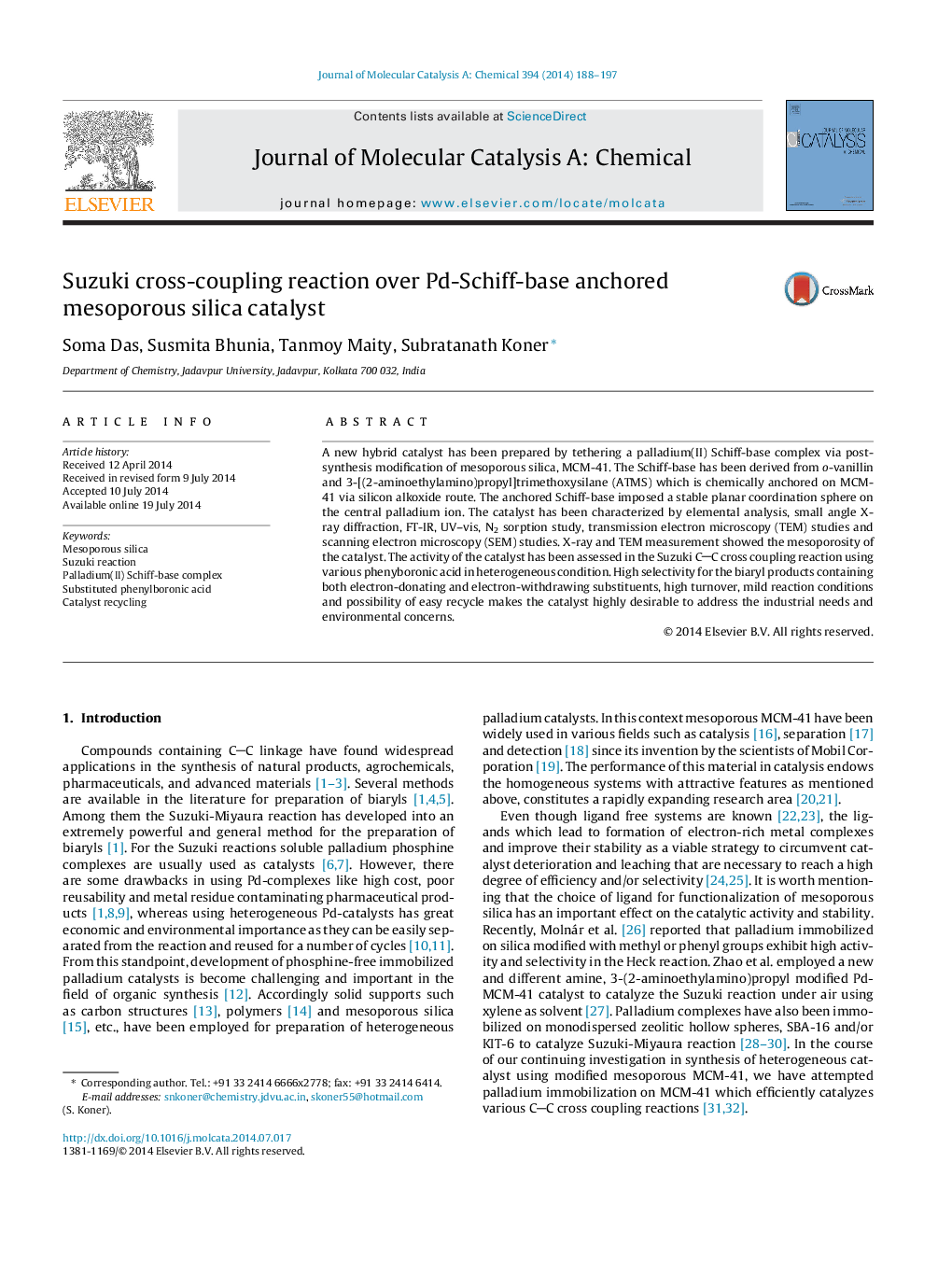| کد مقاله | کد نشریه | سال انتشار | مقاله انگلیسی | نسخه تمام متن |
|---|---|---|---|---|
| 65426 | 48390 | 2014 | 10 صفحه PDF | دانلود رایگان |

• Catalyst has been prepared by anchoring Pd(II) into Schiff-base modified MCM-41.
• Catalyst shows excellent activity in Suzuki reaction with high turnover frequency.
• The catalytic system tolerates a broad range of functional groups.
• Catalyst retains its integrity during recycle and used at least 5 times.
A new hybrid catalyst has been prepared by tethering a palladium(II) Schiff-base complex via post-synthesis modification of mesoporous silica, MCM-41. The Schiff-base has been derived from o-vanillin and 3-[(2-aminoethylamino)propyl]trimethoxysilane (ATMS) which is chemically anchored on MCM-41 via silicon alkoxide route. The anchored Schiff-base imposed a stable planar coordination sphere on the central palladium ion. The catalyst has been characterized by elemental analysis, small angle X-ray diffraction, FT-IR, UV–vis, N2 sorption study, transmission electron microscopy (TEM) studies and scanning electron microscopy (SEM) studies. X-ray and TEM measurement showed the mesoporosity of the catalyst. The activity of the catalyst has been assessed in the Suzuki CC cross coupling reaction using various phenyboronic acid in heterogeneous condition. High selectivity for the biaryl products containing both electron-donating and electron-withdrawing substituents, high turnover, mild reaction conditions and possibility of easy recycle makes the catalyst highly desirable to address the industrial needs and environmental concerns.
A highly efficient heterogeneous catalyst has been synthesized by anchoring of palladium(II) into the Schiff-base modified MCM-41. The catalyst has shown unprecedented high conversion in remarkably short time to complete Suzuki cross-coupling reactions. The reaction methodology is very simple, low cost and non-hazardous which can afford an economically and environmentally viable process. The catalyst can be recycled without any significant loss of activity.Figure optionsDownload high-quality image (151 K)Download as PowerPoint slide
Journal: Journal of Molecular Catalysis A: Chemical - Volume 394, 15 November 2014, Pages 188–197